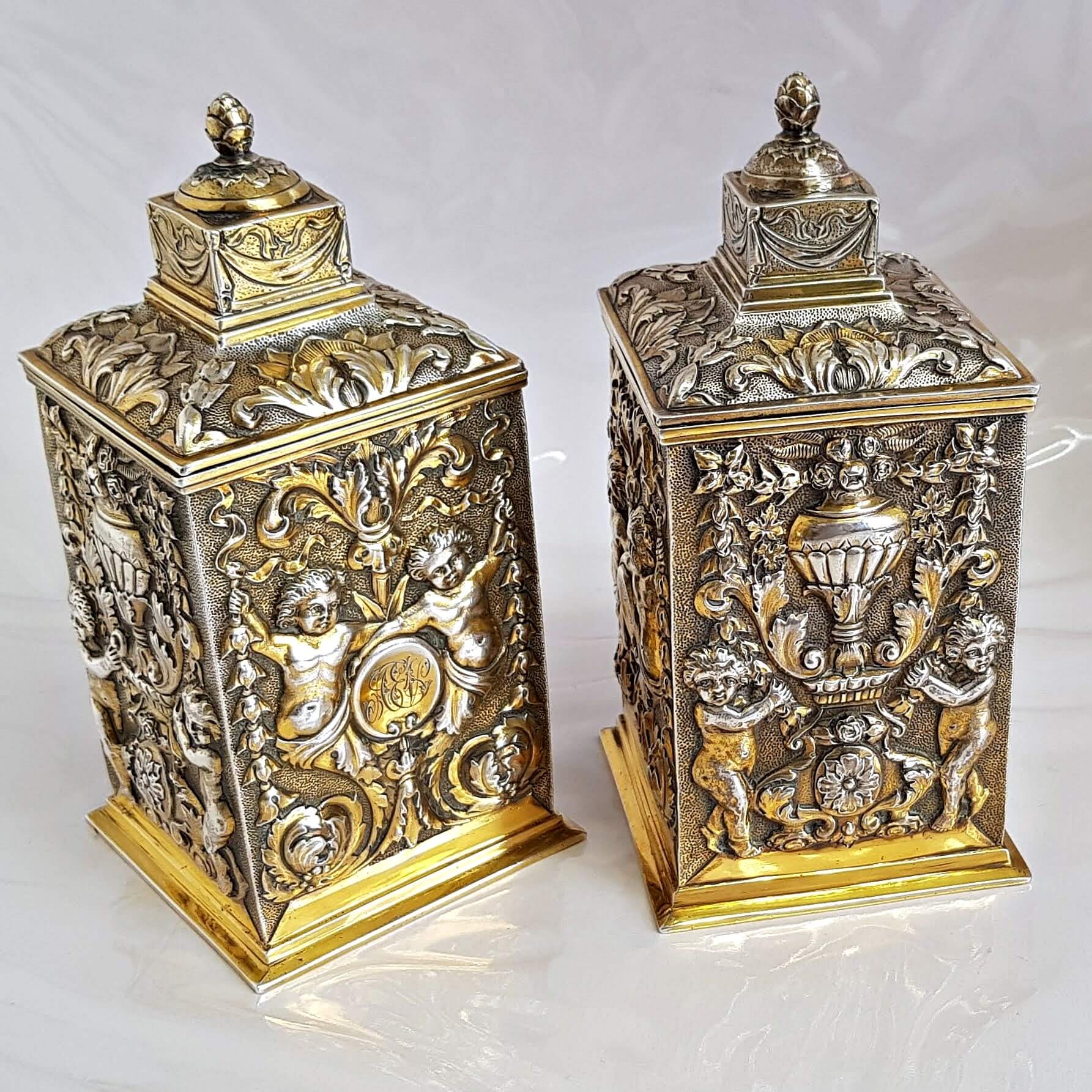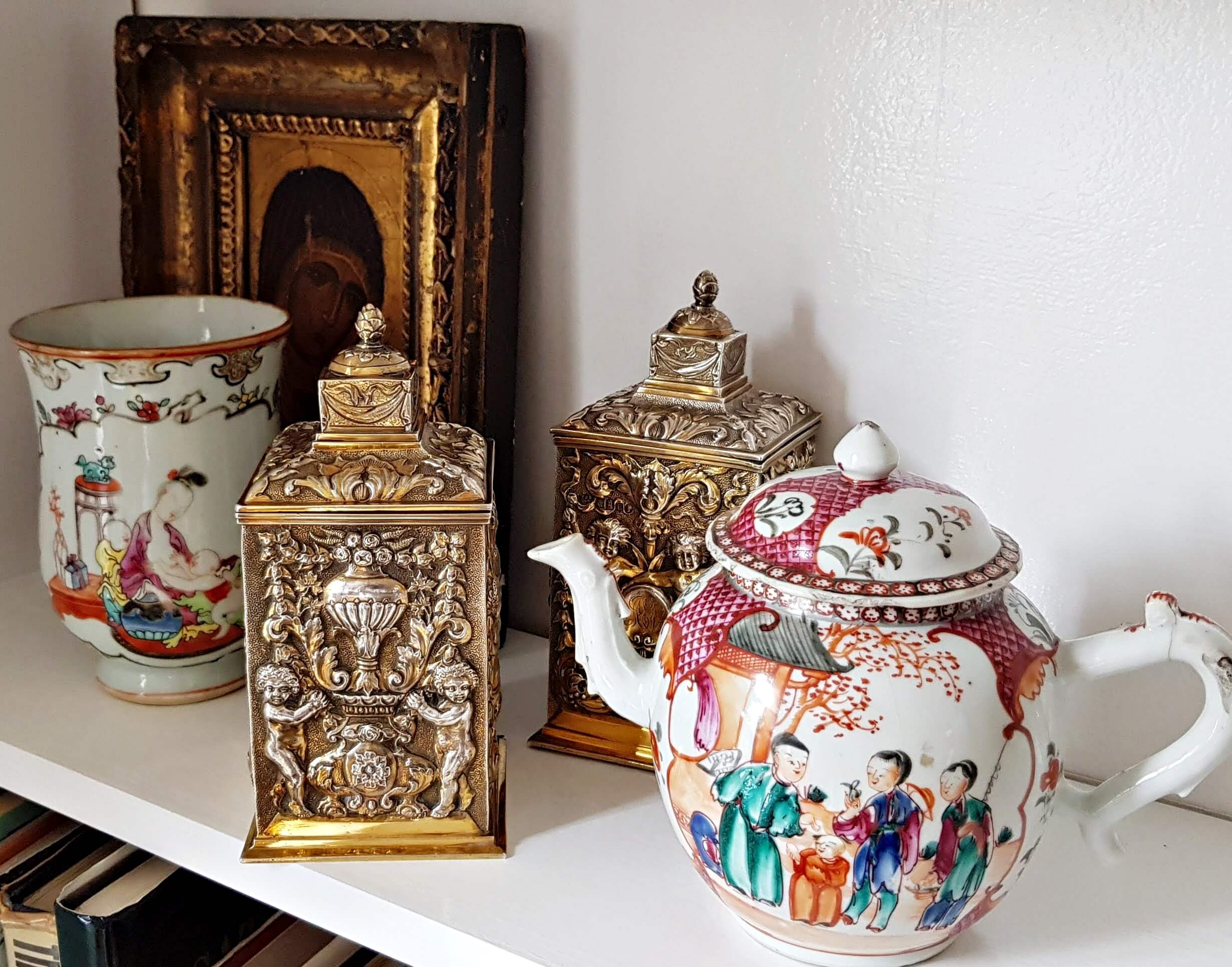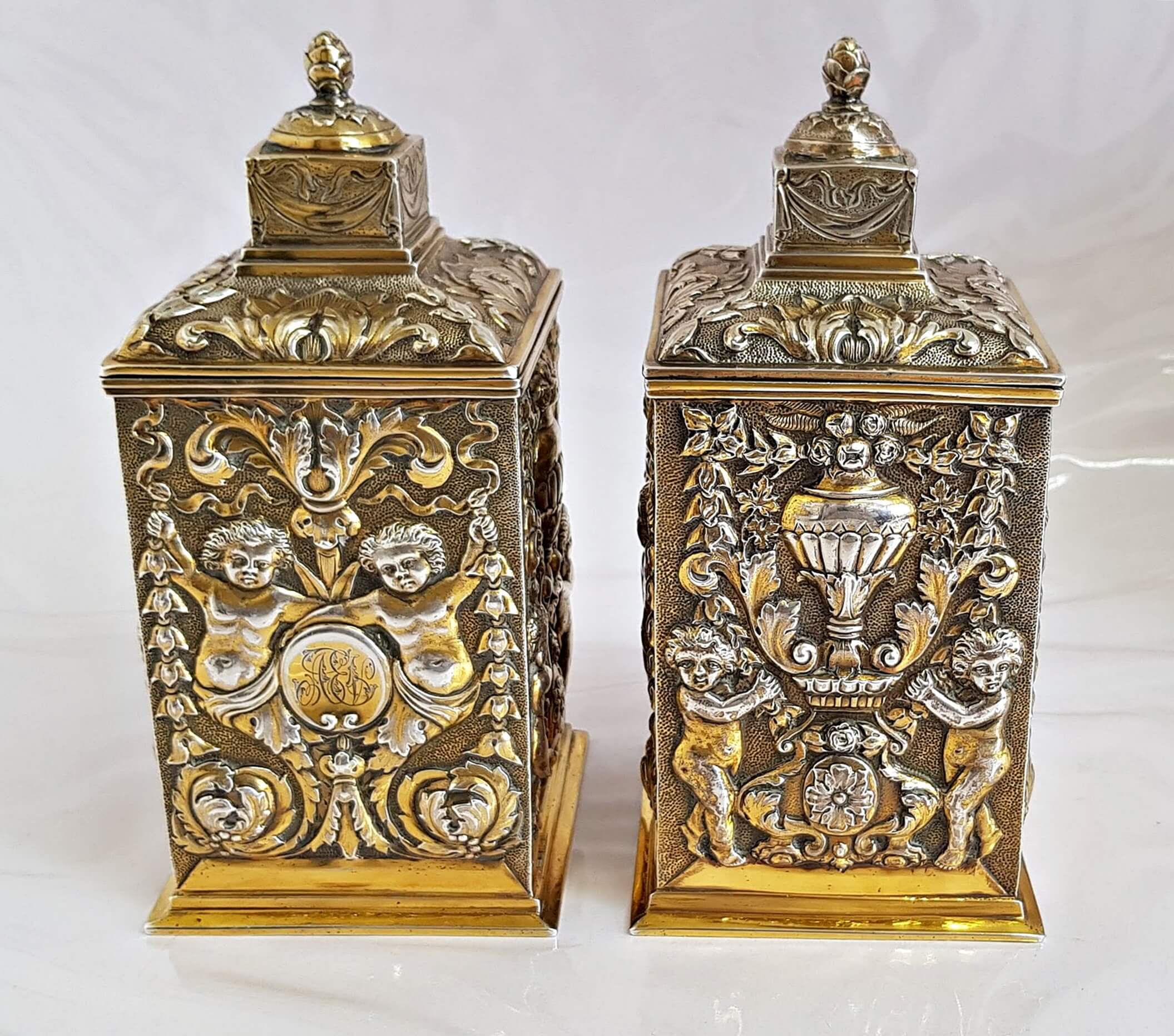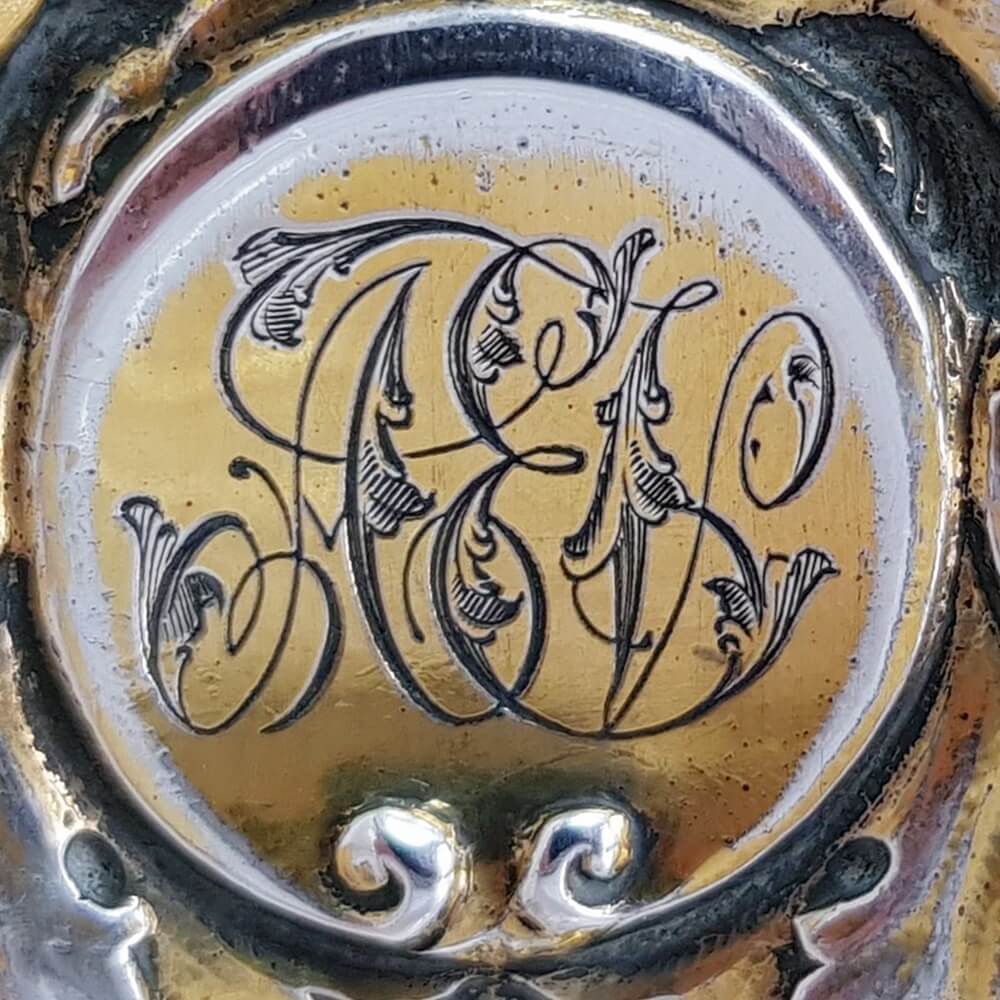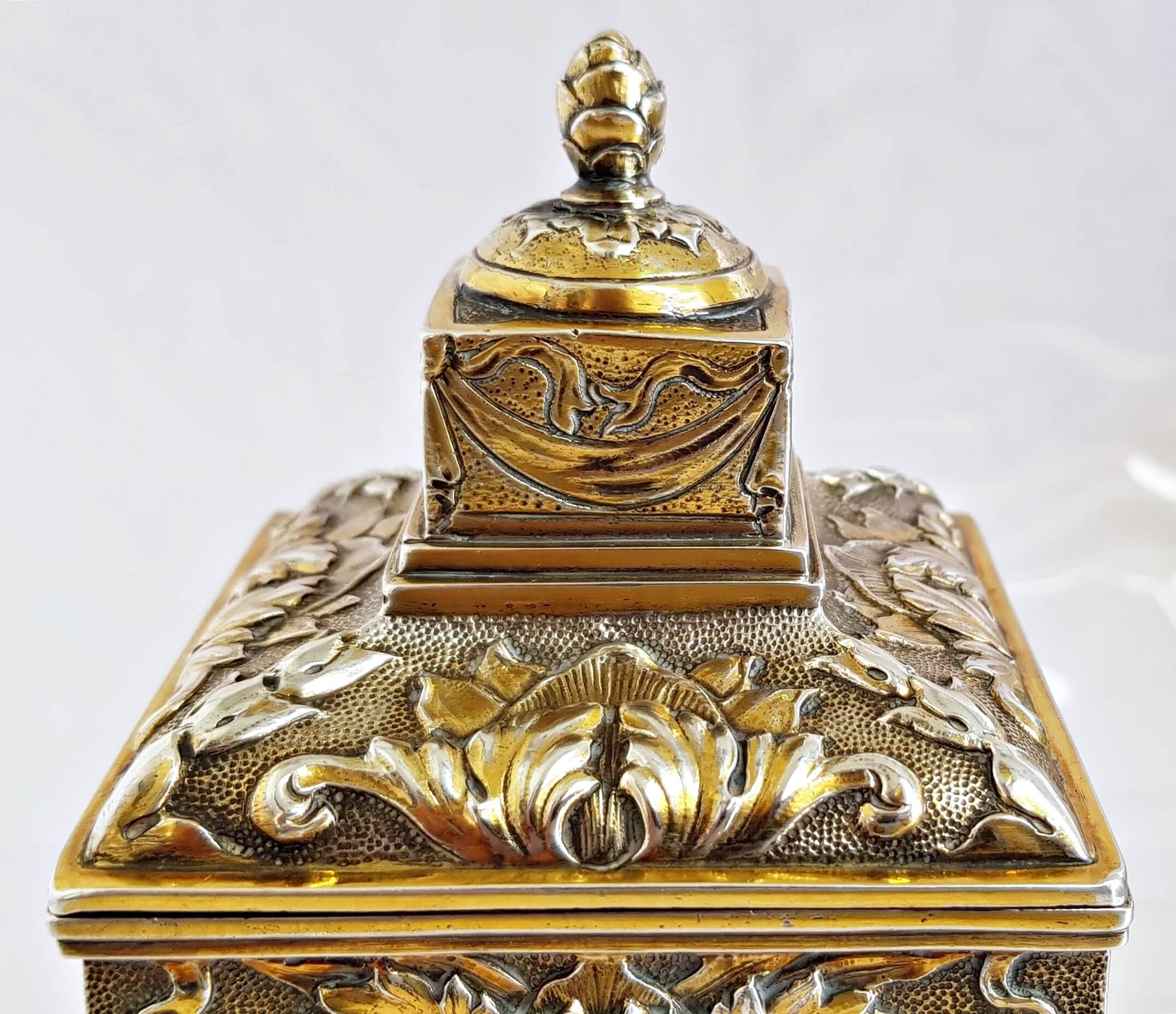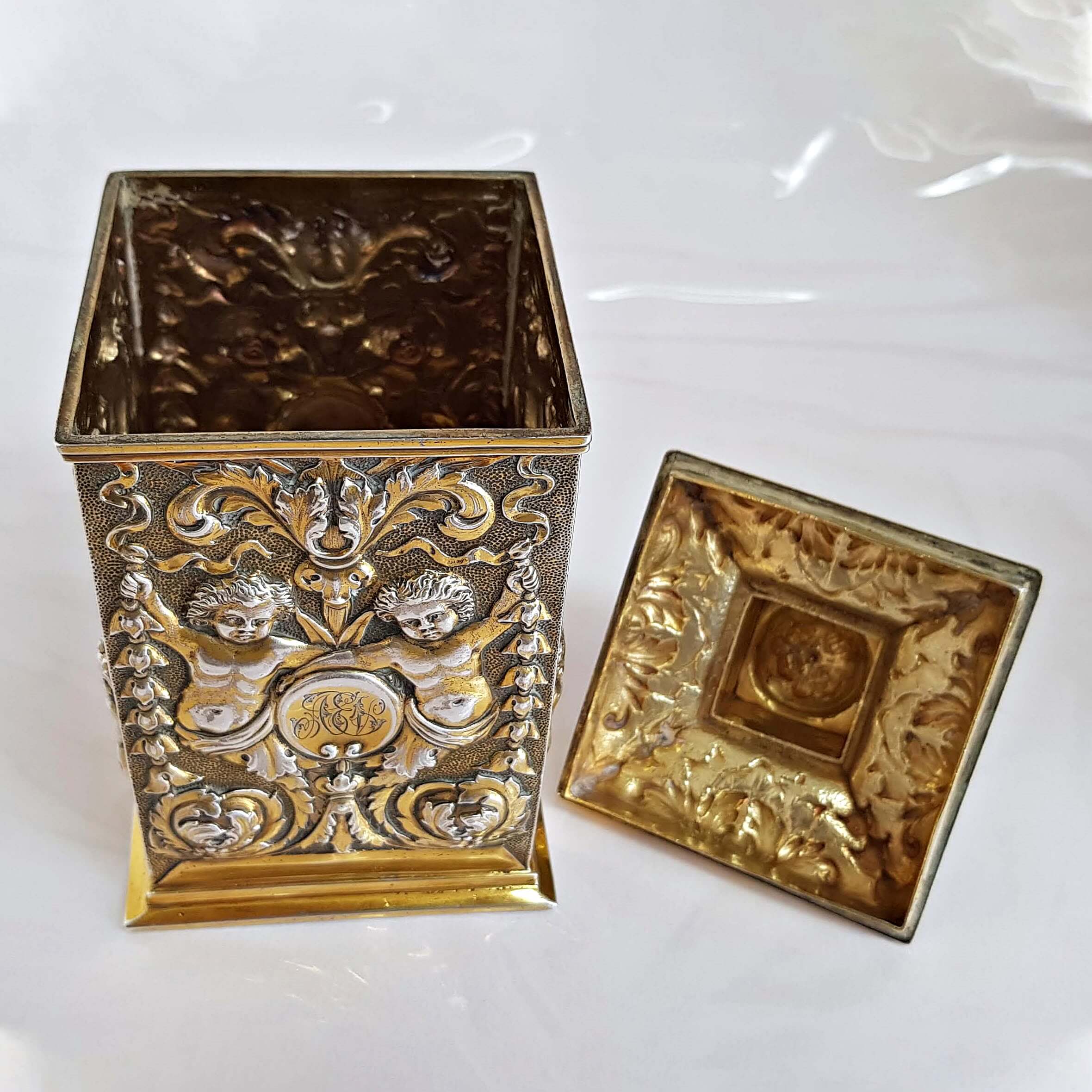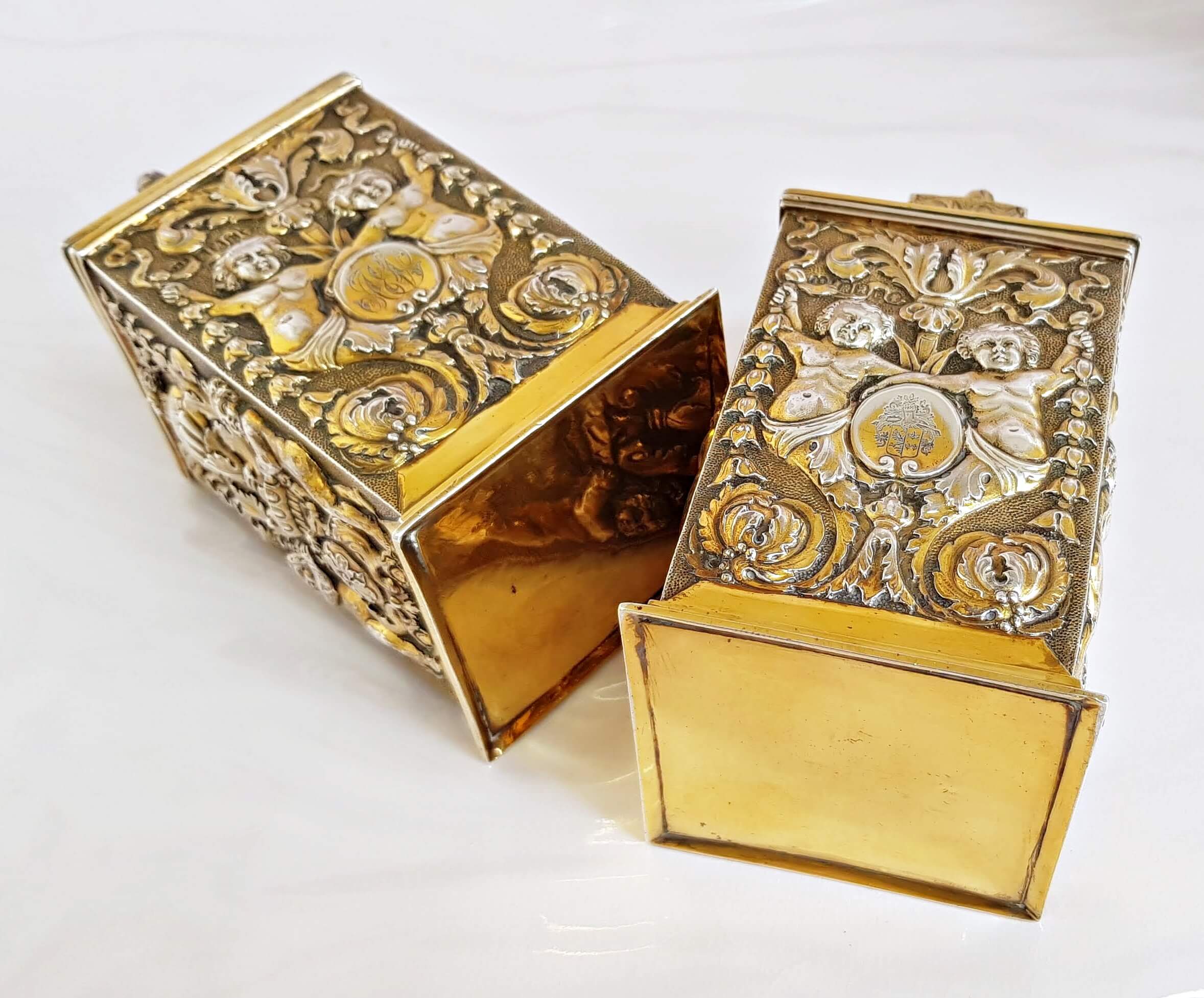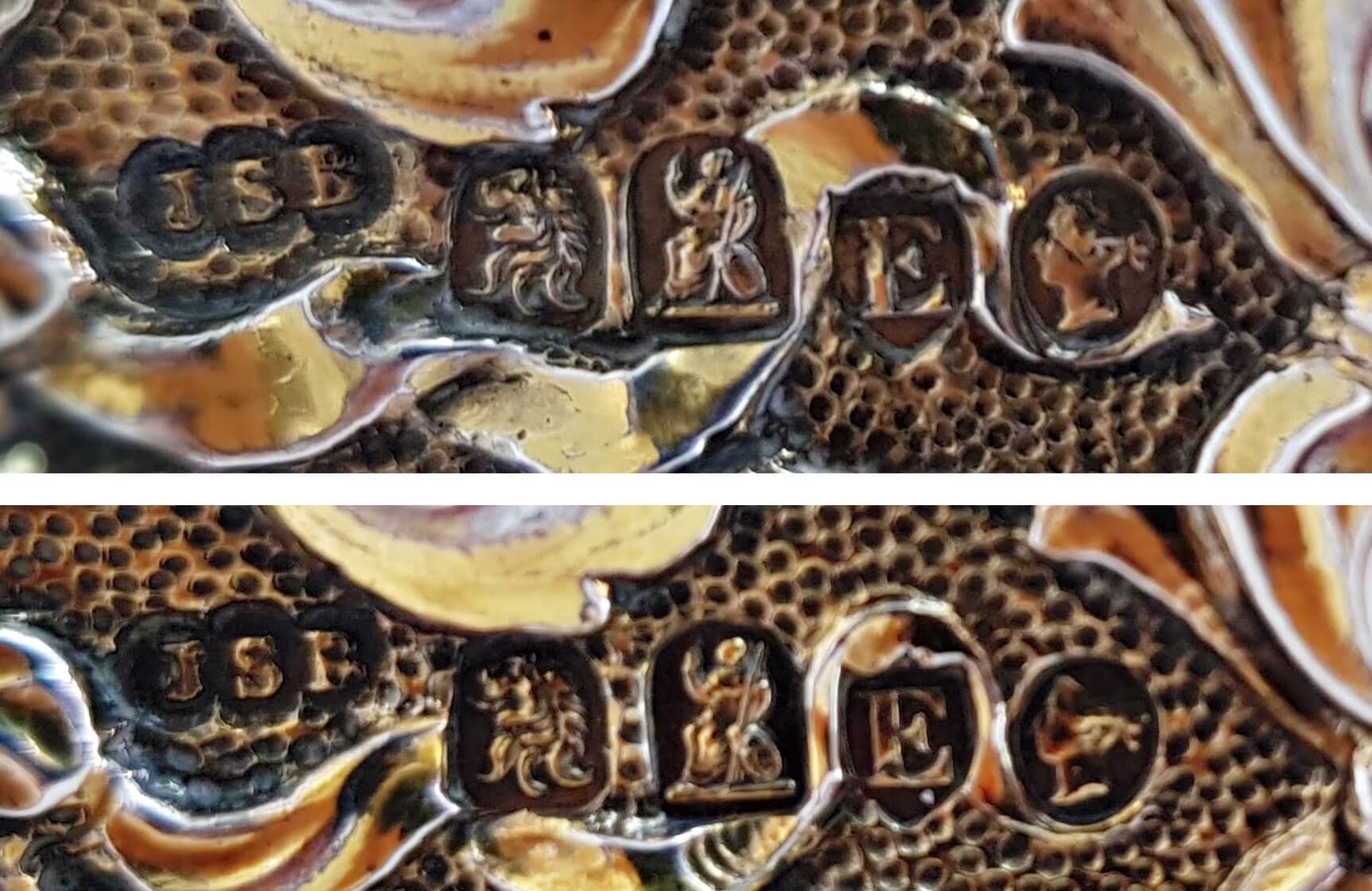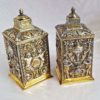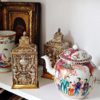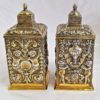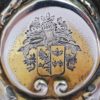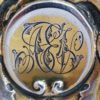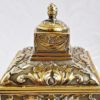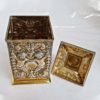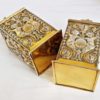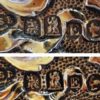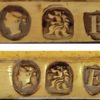Antique Silver Tea Caddies
SOLD
Stock: 9994
Date: 1880
Maker: John Septimus Beresford
Country: England
A magnificent pair of antique silver tea caddy boxes of cannister form with lift off lids. Large size and good...
Description
Description
A magnificent pair of antique silver tea caddy boxes of cannister form with lift off lids. Large size and good gauge silver. Gilt finish. Britannia standard silver. The body is beautifully ornamented with cherubs, swags, acanthus leaf and other classical motifs on a hand chased matted background. Each box has an armorial engraved to the front and a monogram of old fashioned initials to the reverse.
Total weight 841 grams, 27 troy ounces.
Height 16.7m. Base 8 x 8cm.
London 1880.
Maker John Septimus Beresford.
Sterling silver.
Marks. Stamped with a full and matching set of English silver hallmarks to the top edge of the body and the edge of the lid.
Britannia Standard silver is 95.8% pure. In 1696, so extensive had become the melting and clipping of coinage that the silversmiths were forbidden to use the sterling standard for their wares, but had to use a new higher standard, 95.8 per cent pure. New hallmarks were ordered, “the figure of a woman commonly called Britannia” and the lion’s head erased (torn off at the neck) replacing the lion passant and the leopard’s head crowned. This continued until the old standard of 92.5 per cent was restored in 1720. Britannia standard silver still continues to be produced even today.
Literature. A Tea Caddy is a box, jar, canister, or other receptacle used to store tea. The word is believed to be derived from “catty”, the Chinese pound, equal to about a pound and a third avoirdupois. The earliest examples that came to Europe were Chinese tea canisters in blue and white porcelain with china lids or stoppers. Tea in the early 18th Century was expensive, and also there was a tax on tea, so early tea caddies were small and made in precious materials such as silver, shagreen or tortoiseshell which reflected the valuable contents within. Some of the earliest silver examples have sliding bases (or tops) and the cap was used for measuring the tea. By the mid 18th century matching sets were available, with two caddies (for green and black tea) and a sugar bowl, all fitted into a wooden or shagreen case, often with silver mounts. During the late 1700’s the locking silver tea caddy was introduced with its own key which the lady of the house kept on the chatelaine around her waist. Double locking tea caddies in silver are rare.
Condition
In very good condition. Partial wear to the gilding.
Maker Information
Maker: John Septimus Beresford
John Septimus Beresford, London silver maker. Working circa 1875..1890. Mark (registered June 1873).
Our Guarantee
Customer satisfaction is our primary concern
All silverware on our website is checked thoroughly prior to offering it for sale and every product listing contains a condition report and details of the silver hallmarks.
All items offered on our website include:
- Free Shipping Worldwide
- Tracked and Insured
- 14 day no quibble money back guarantee
- We are accredited members of LAPADA and conform to their strict professional standards
- We dispatch 1-3 days after receiving cleared payments
More detailed information about deliveries, returns and how to pay is available in the Help section at the bottom of this page.
